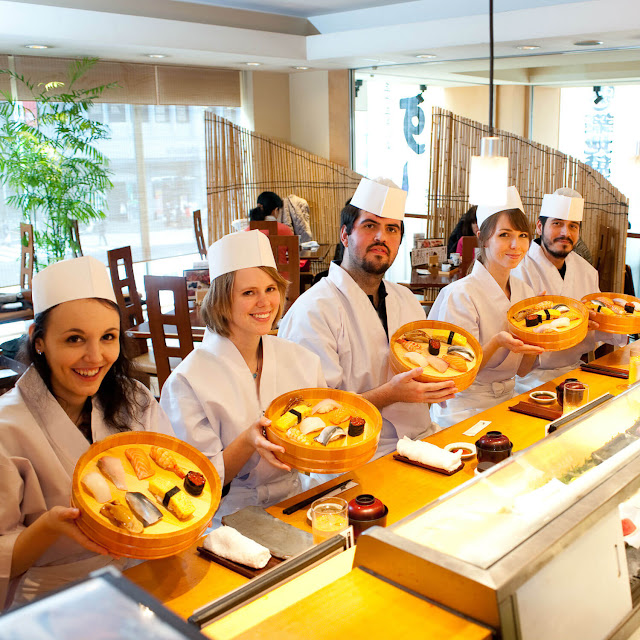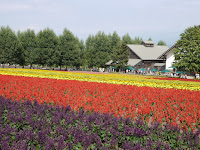If you are looking for something a little bit different from the norm and a totally unique experience, check out these 5 unique experiences in Tokyo.
MORI Building DIGITAL ART MUSEUM – teamLab Borderless
One of the most popular and unique museums in Tokyo is the MORI Building DIGITAL ART MUSEUM – teamLab Borderless. This futuristic digital art museum in the Odaiba area of Tokyo is a world of artwork without boundaries that will stimulate all of your five senses. Wander around and experience art moving out of rooms as well as a chance to interact and communicate with the art in a three-dimensional 10,000 square meter world.
Official Website
 |
| MORI Building DIGITAL ART MUSEUM | Photo by rabbit_akra on flickr |
Robot Restaurant
Japan is known around the world for its robot technology and now you can experience it first-hand at the Robot Restaurant in the Kabukicho district of Shinjuku. One of the top tourists attractions in Tokyo, it is one of the wildest and craziest shows on the planet. Be prepared for your eyes and ears to be bombarded with laser lights, noise and kitsch. Enjoy a bento-box meal while you watch the fun-filled show, which includes fembots, robot fights, dinosaurs and sexy dancers.
Official Website
 |
| Fembots at the Robot Restaurant in Shinjuku | Photo by Cory Doctorow on Wikimedia Commons |
Join a Cooking Class
Tokyo has more Michelin Stars than any other city in the world with some amazing authentic regional food on offer from all across the country. Food is a big part of any trip to Japan, so why not take it to the next level by joining a cooking class in Tokyo. A wide variety of cooking classes are available such as sushi making, ramen, bento making and wagashi (traditional Japanese confectionary). You can even join a regular Japanese family for some traditional home-cooked Japanese dishes as well as vegan and vegetarian options. They have about 480 cooking classes in Tokyo, so you are bound to find something that interests you.
Book an authentic cooking class in Tokyo!
 |
| Sushi Making Class |
Anata no Warehouse Kawasaki
Tokyo is home to some of Japan’s best video arcades including Anata no Warehouse in Kawasaki, an industrial city in the Greater Tokyo area. This five-story arcade is specifically designed to look like the former Walled City of Kowloon in Hong Kong. This dystopian amusement arcade is strictly for adults with its sci-fi Blade Runner-esque atmosphere, it feels like you are entering an alien world. If you are a gamer, this is heaven for you, with each level of the building dedicated to different type of gamers.
Official Website
 |
| Anata no Warehouse | Photo by Ken Ohyama on Wikimedia Commons |
Odaiba
Odaiba is a high-tech entertainment and shopping area on an artificial island in Tokyo Bay. Here you will find the iconic rainbow bridge which connects Odaiba to the heart of Tokyo as well as a life-size Gundam statue and a replica of the Statue of Liberty. Odaiba is home to the MORI Building Digital Art Museum, Venus Fort, a Venice-themed shopping mall, Zepp Tokyo, one of Tokyo’s largest concert halls/nightclubs and the Aqua City and Diver City shopping centers.
 |
| Rainbow Bridge at night from Odaiba | Photo by Gussisaurio on Wikimedia Commons |


























